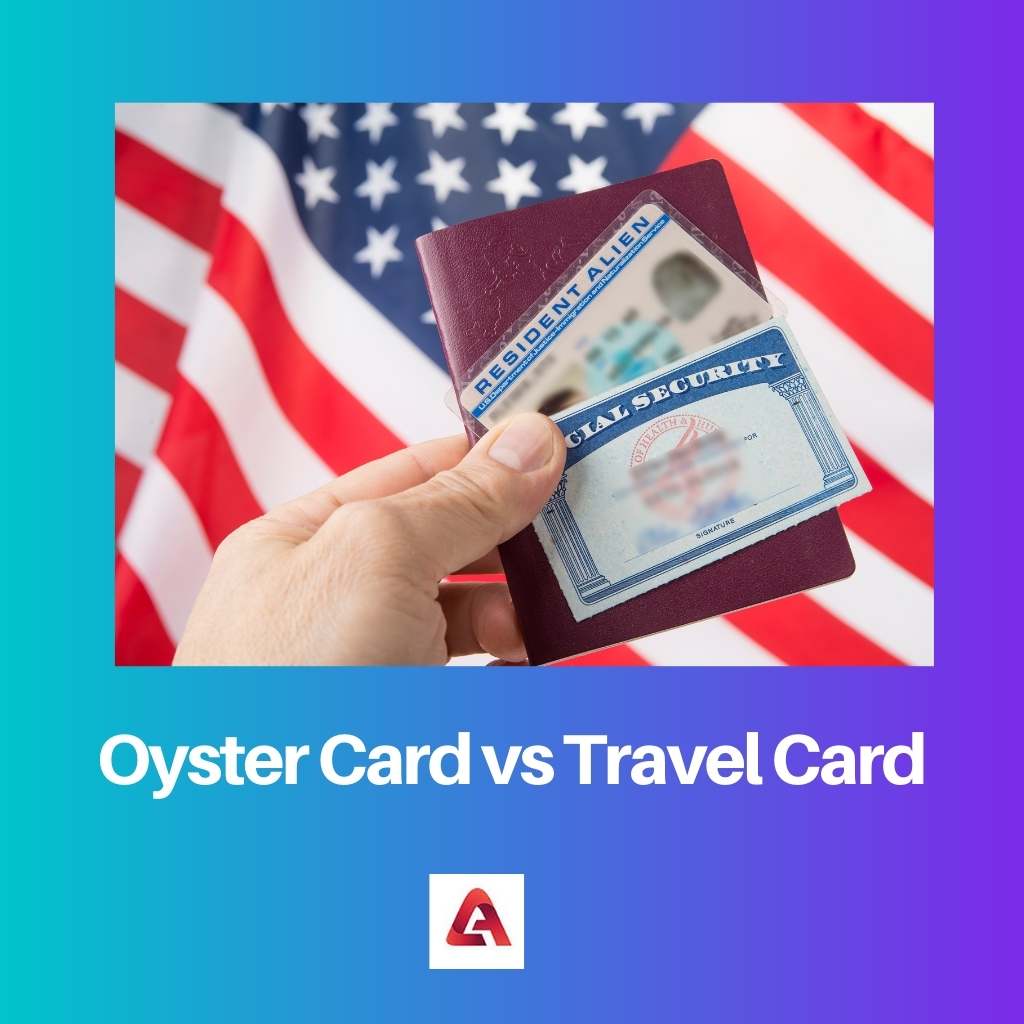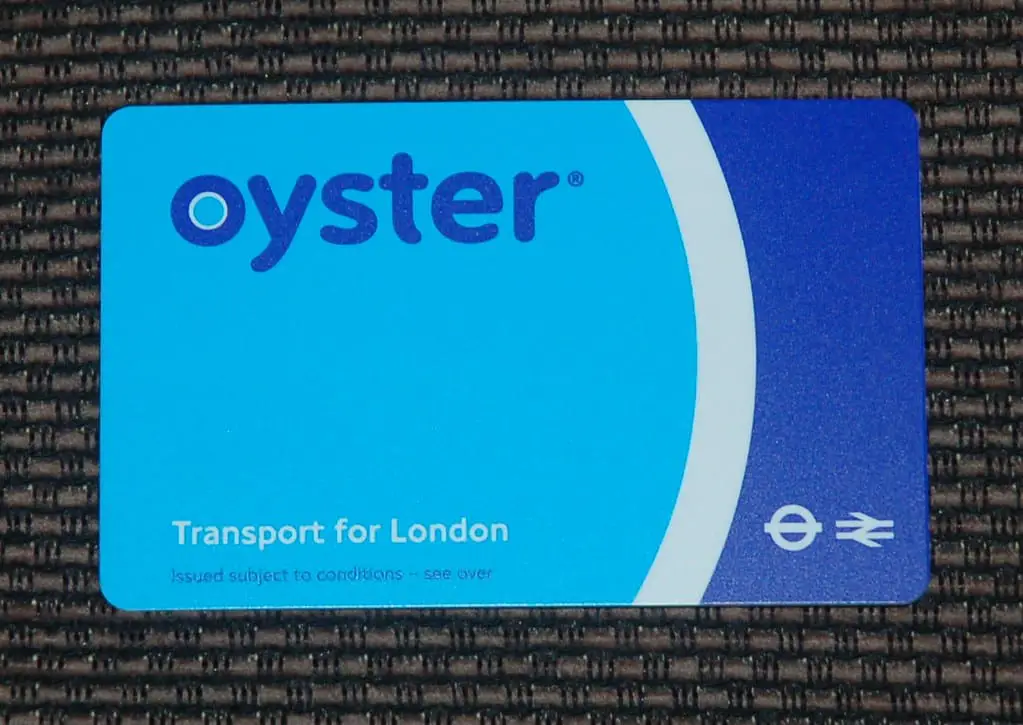Visitors to London are familiar with these terms but tend to get confused at times. Both terms refer to payment methods for public transport in London, United Kingdom.
Buying a ticket for a single journey might seem financially penalizing. To mitigate this problem, London has introduced these payment methods.
Money in oyster cards gets debited only when used, and the travel cards are based on an off-fee which means they are valid for a certain period.
Key Takeaways
- Oyster Card is a smart card used for pay-as-you-go travel on public transport in London, while Travel Card is a paper ticket that allows unlimited travel within a specified area.
- Oyster Card can be topped up with credit, while Travel Card needs to be purchased for a specific duration.
- Oyster Card is more suited for occasional travellers and short journeys, while Travel Card is more suited for regular commuters and longer journeys.
Oyster Card vs Travel Card
The Oyster Card and Travelcard are two types of payment methods for public transportation in London, with the Oyster Card offering pay-as-you-go convenience and the Travelcard providing unlimited travel within certain zones for a set period.

An Oyster Card is a prepaid card that can be used on London public transportation. You load credit onto it, and all train stations and buses have readers where you can touch your card.
There is a daily cap after which you will not be charged for any additional journeys, although this varies depending on how far out you are travelling and what time of day it is. Outside of London’s fare zones, the cards aren’t valid.
A travel card is a card that may be loaded with foreign currency and used to withdraw cash from an ATM, in-store, online, or over the phone while travelling.
It may be used in over 36 million locations around the world. When you travel, you may be eligible for perks such as participation in a program that allows you to pass through airport security more quickly, access to airport lounges, etc.
Comparison Table
| Parameters of Comparison | Oyster Card | Travel Card |
|---|---|---|
| What is it? | Colour | A travel card is a payment card that gives unlimited access to travel at any time via bus, tram, and national rail in London. |
| Introduced in the year | In 2003 | In 1958 |
| A travel card is a payment card that gives unlimited access to travel anytime via bus, tram, and national rail in London. | A standard card is in blue. | No specific expiration date, and can be returned anytime. |
| Usage | The card can be used as long as it is preloaded with money. | Unlimited Usage. |
| Expiry | No specific expiration date, and it can be returned anytime. | These cards come with a specific expiration date. |
What is an Oyster Card?
An Oyster card is a contactless prepaid payment card that can be used to pay for public transportation in London. You can also get the same discount by using a contactless debit card, but it must be the same card at each touchpoint.
Rates for buses and trams are charged a constant fare per journey, but train and underground fares vary depending on the time of day, distance travelled, and frequency of use.
In a nutshell, you create an account, pay a deposit for the card, add credit from your bank account or cash, and then touch your card to the reader to have the fare deducted from your balance when you board a bus or tram or enter or exit a station in the scheme’s service area.
Pre-loading money into Oyster cards is possible. You then use them to board and exit any tube or suburban train and board any bus (buses are flat fares).
The card will continue to charge you until you reach the equivalent of a day travel card, at which point it will convert what you’ve paid into a day travel card, and the rest of your days’ travel will be free.
It’s best not to use the tube before 9:30 a.m. on weekdays if you’re a tourist. This has the advantage of not being squeezed like sardines into a horrible tube. Still, it also has the advantage of allowing you to purchase an ‘off-peak day travel card’ that will enable you unrestricted travel throughout all zones for a day.

What is a Travel Card?
A travel Card is a prepaid card that can be used in foreign destinations. Depending on your trip plans and destinations, you can load single or many currencies onto this card.
It’s also a prepaid card that allows limitless bus travel, metros, or trains for a set time that must be checked for usage and acceptance before going on any travel card for your destination country.
Because it’s preloaded with your convenience and travel budgets, it’s safer than carrying cash or traveller’s cheques. Regarding carrying money abroad, travel cards are the greatest option.
The following are the purposes of the travel card:
- Travel cards are simpler to obtain and do not necessitate a bank account.
- Acts as a financial institution
- They can store different currencies on a single card.
- Travel cards have pre-determined currency rates and do not require conversion charges.
- In the event of theft or loss, travel cards have chip and pin security.
- Compared to debit/credit card alternatives, they have reduced transaction fees.
- Travel cards are virtually universally accepted.
Many banks, such as Axis Bank forex card, IndusInd Bank forex card, and HDFC Platinum forex card, offer low-cost travel cards and excellent services.
Main Differences Between Oyster Card And Travel Cards
- You need to have a deposit if you want an oyster card, whereas you don’t have to deposit if you want to avail yourself of a travel card.
- Oyster cards have restrictions in certain places and can’t be used without setting fixed reading machines. But travel cards do not have such restrictions.
- If you lost your Oyster card, you could get your money back, but you cannot have this facility in case of a travel card and cannot get your money back.
- Oyster cards work expensive if used for a long travelling period, whereas travel cards work cheaper for a long travelling period.
- When your travel pattern changes, you cannot switch from an oyster card to a travel card. But you can switch between a travel card and an oyster card when your travel pattern changes.



